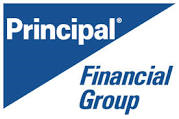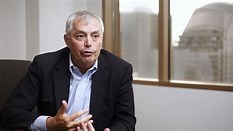CEOs set the tone for their companies in every respect–behavior, motivation, intellectual curiosity, innovation and ethics—so it was not surprising to hear that the Larry Zimpleman, CEO of Principal Financial Group ($114 billion in assets under management), my former employer, criticized some of the most innovative products in modern financial history as being too complicated for the average investor to understand or benefit from.
What Zimpleman said in a conference call was that alternative investment strategies and products, including ETFs, should not be included in 401(k) product offerings because the participants would not be able to understand how they worked and by implication, would not be able to understand the risks and rewards these non-traditional products and strategies offer.
In the interview, as reported by Bloomberg news, Zimpleman said:
“When people start talking about ETFs and liquid alts and private equity and all of that stuff, I too chuckle a little bit,” Zimpleman said in a conference call in April in response to a question about including exchange-traded funds and other options in 401(k) plans. “It’s really hard to see how that is something that can be easily explained.”
“All that stuff” is a broad category, but if ETFs are included in “all that stuff” Zimpleman should be reminded by those closest to him that ETFs have gathered more assets faster than mutual funds (the core business of Principal) and have better prospects for offering better strategies and products to deal with volatility and broad market gains and losses than his proprietary mediocre mutual funds.
It’s hard to see what Zimpleman is chuckling about in Des Moines when Principal’s biggest product innovation in recent years, maybe its entire mutual fund history, was when it launched target-date funds (TDFs). I worked at Principal when TDFs were launched as  part of the entire industry’s move into that new product category, and it was as much of a marketer’s dream as a way to offer a single-package of asset diversification over time, which became the TDF cover story.
part of the entire industry’s move into that new product category, and it was as much of a marketer’s dream as a way to offer a single-package of asset diversification over time, which became the TDF cover story.
While TDFs do simplify asset diversification combined with a specific time frame, they vary widely from company to company in terms of glide path strategies, asset decumulation as the retirement date approaches and risk exposures. They are the better default product in 401(k)s and this helps account for their popularity, but not necessarily their performance. Among the plans tracked quarterly by the research firm, Callan, 85% of employers offered target-date funds last year vs. 78% in 2012.
TDFs are great default funds for uneducated investors, but they are certainly not the panacea the industry boasts about. Creating retirement security for workers is much greater than offering a fund product; it is a discussion which the fund industry has avoided since it involves advocating public policy positions, which often run counter to the self interests of the mutual fund industry itself.
But what TDFs all have in common is that they use the asset diversification and retirement time frame cover story as a way to direct investments into mediocre mutual funds in the company’s proprietary fund family. This means that a lousy, mid-cap mutual fund, which could not attract assets as a stand-alone fund, now gets a guaranteed inflow of assets simply because it is part of a TDF package, not because of its own merits.
Principal has many mediocre funds which benefitted from this and I bet most shareholders in these funds understand that they could be getting better performing and cheaper asset class exposures via ETFs, which would increase their net returns over time. Any shareholder
would also understand that in order to make a great meal, you have to use good ingredients. Similarly, if you want good TDF returns over a 20-year plus time frame, you need mutual funds that deliver above- average returns and low fees. If Zimpleman thinks that is hard to explain, he should assemble a focus group with an objective moderator and see the results. They certainly would surprise him.

Importantly, it is also impossible to mention the popularity of TDFs without mentioning 12b-1 fees and other incentives used by the fund industry to promote their commodity-like funds over the competition. To sell these similar funds, companies offer plan sponsors and financial advisors rebate and cash incentives that are often not disclosed to all affected parties in understandable English. This gets into the important discussion of fiduciary responsibility and transparency which the fund industry has opposed for decades. (See the book, How 401(k) Fees Destroy Wealth and How Investors Can Protect Themselves, for more details on these anti-investor practices.)
Betting on Dumber Investors
While ETFs have accumulated $1.7 trillion compared to $14.8 trillion in stock and bond mutual funds, TDFs have grown popular because they are cheaper, more liquid, offer broader asset class and strategy choices than mutual funds.
If Zimpleman thinks ETFs and more flexible investment strategies have no role in 401(k)s, he is doing a disservice to his investors shareholders, as well as his own employees, who readily encounter the benefits of alternative strategies and products in their everyday sales and RIA contacts.
ETF Asset Growth (U.S. only) vs. Mutual Funds
2002–$100 billion
2006– $400 billion
2009–$800 billion
2013–$1.7 trillion
2013–$14.8 trillion in mutual funds
Source: CNBC
I worked with Principal internal and external wholesalers and if they communicated Zimpleman’s smug attitude, they would lose all credibility with their external professional advisor audiences simply because this is what they are seeing in the real world today. The benefits of ETFs are undisputed as their growing popularity demonstrates.
This is why I wrote a memo to the head of marketing and its chief investment officer at WM Group of Funds, that their Strategic Asset Management (SAM) diversified portfolio of funds combined into a single package, could be replicated via ETFs. These ETF funds would be cheaper and offer more exposure to different asset classes than anything available via traditional mutual funds.
However, that idea was ahead of its time because a main revenue source of mutual funds offered by WM, and now by Principal, are the under-the-table 12b-1 fees, which are paid to advisors who sell Principal funds over another competing brand regardless of suitability or performance. This is how advisors surmount the commodification of mutual funds. (The WM Group of Funds was acquired by Principal when Washington Mutual made the terrific decision to sell their mutual funds and dive into the leveraged mortgage market. This great management decision led to the largest S&L failure in history.)
It’s clear Zimpleman has a job for life, but criticizing the average investor as being unable to understand anything except the long-only holding strategy, while not explaining the associated risks of absorbing those losses incurred during the inevitable recessions, shows Principal’s intellectual limitations, not those of its shareholders.
It’s clear that 401(k)s need a wider range of products and strategies if they are going to meet the future retiree demands in a more volatile and low-growth investment environment. If Zimpleman, as Principal’s intellectual leader, is publicly saying it cannot meet these new demands and cope with changing investment realities, its shareholders and investors should take note that it’s CEO is chuckling about the validity of these proven, viable investment ideas. This also is a great sign that shareholders should find a fund company which values them and their ability to consider new ideas. And that certainly excluded Principal.










